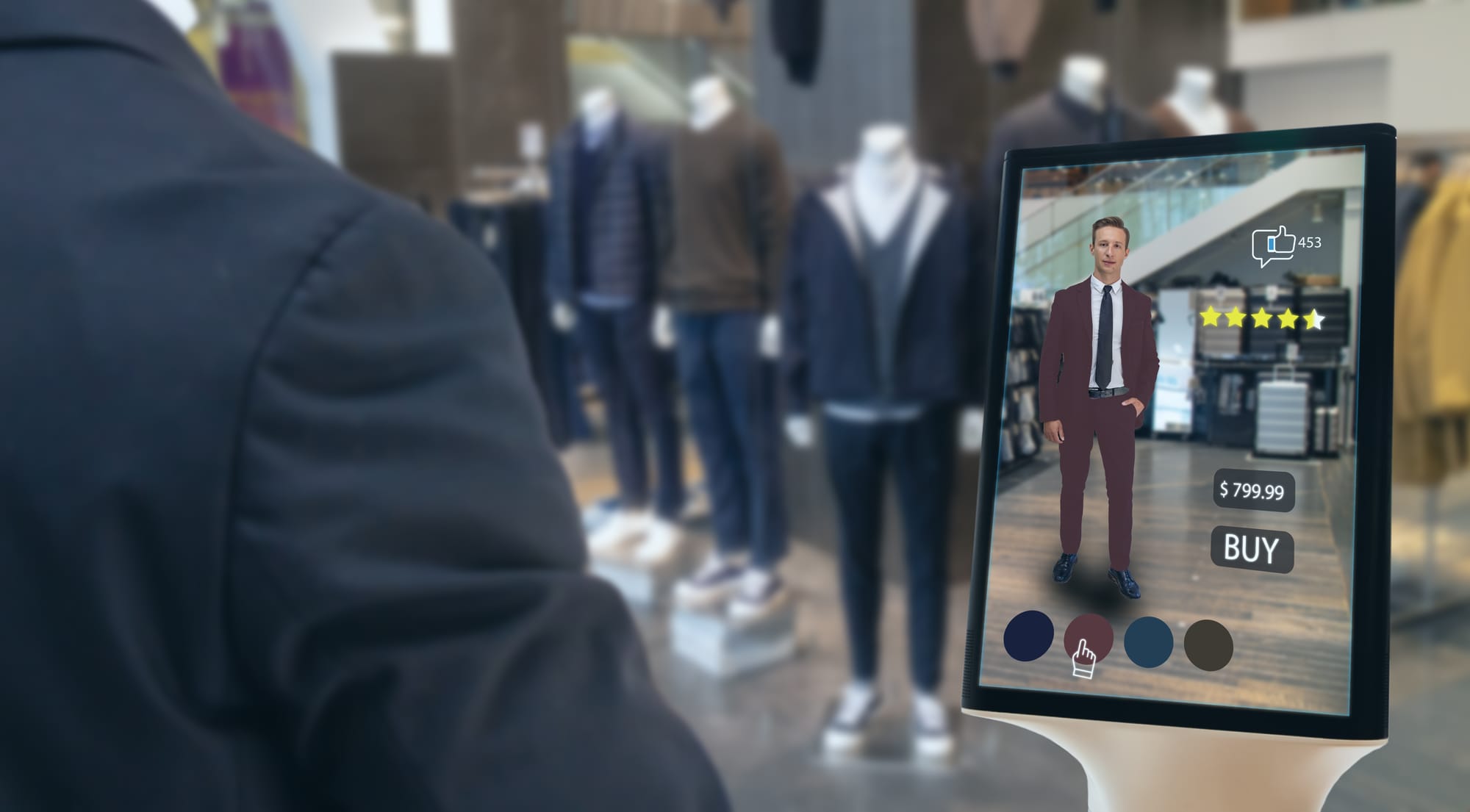The Luxury Boom: How AI is Transforming the Industry
Explore how AI is transforming the luxury goods industry, from personalized product recommendations to identification of counterfeit goods. Learn more here.

Artificial Intelligence (AI) has increasingly become a mainstay for companies looking to enhance the customer experience, drive sales, and glean valuable insights from data. Luxury goods and jewelry brands have embraced AI technologies, such as chatbots and facial recognition, to elevate the customer experience and offer personalized product recommendations.
According to Statista, the global fashion market is expected to reach $4.4 billion in AI adoption by 2027. It is virtually impossible to visit a luxury goods website without encountering some form of AI-powered chat technology, designed to help customers find the perfect product that meets their needs. These technologies are powered by algorithms that track and analyze customer journeys, providing targeted recommendations and support.
Understanding Artificial Intelligence
According to Gartner, Artificial Intelligence (AI) encompasses a range of advanced analytical and logical techniques, including machine learning (ML), which enable machines - particularly computers - to interpret events, automate decision-making, and take actions that mimic human intelligence.
AI systems function by ingesting vast amounts of training data, scanning this data for specific patterns, and using these patterns to forecast future actions or states. For instance, an image recognition tool that is fed millions of example images can learn to identify them in real-time as they appear.
Real-World Examples of Artificial Intelligence
Artificial Intelligence (AI) has made a number of significant impacts in various industries, including:
- Maps and Navigation: AI has revolutionized transportation by replacing traditional printed maps with digital ones that can be accessed through vehicle or mobile device navigation tools. For example, you can use Google Maps to get directions to your destination by simply inputting the address into the app on your mobile device.
- Facial Detection and Recognition: AI allows for the identification of any human face through a camera system. Facial recognition technology can recognize a particular face multiple times, which can be useful for personalization. For example, we can use Face ID to unlock our phones.
- Chatbots: AI chatbots are an increasingly popular solution that use natural language processing (NLP) to mimic the conversational style of customer service agents. Modern chatbots are no longer limited to specific input formats, like yes/no questions, and can provide in-depth responses to complex queries. If a response is rated poorly, the chatbot will recognize its error and avoid making the same mistake in the future, ensuring optimal customer satisfaction.
- Search Algorithms: When shopping online or searching for a product, you may notice that your recommendations often align with your hobbies or recent searches. These sophisticated recommendation systems have gradually come to understand your behavior and preferences through the analysis of machine learning and deep learning algorithms applied to the data you provide upfront. As a result, these systems can accurately predict your preferences and suggest products you may be interested in purchasing.
Artificial Intelligence: The Catalyst for Luxury Fashion's Evolution
As digital technology continues to advance, luxury brands and jewelry companies are increasingly adopting digitalization in order to stay competitive. One of the most significant developments in this industry is the growing use of artificial intelligence (AI).
Identifying Fake Luxury Goods
One key application of AI in the luxury goods industry is the identification of counterfeit products. With the quality of fake luxury goods approaching the point where it is often difficult to distinguish them from the real thing, it is increasingly important for luxury brands to utilize AI to identify fake products. By using machine learning to analyze millions of images, AI can identify subtle irregularities and inconsistencies in the size, shape, color, texture, and angles of luxury goods, enabling companies to determine which products are genuine and which are fake. Burberry, for example, uses AI-powered image-recognition technology to differentiate between real and fake products.
Facial Recognition In-store
Another way that luxury brands are using AI is through the use of facial recognition technology in stores. This allows brands to provide a high level of personalization to customers by alerting clerks to a customer's preferences when they enter the store. This information can then be used to make personalized suggestions to the customer. For example, fashion business Ruti uses opt-in-only facial recognition to provide personalized recommendations based on a customer's shopping preferences.
Chatbots (Dior, an Early Adopter)
Chatbots are another area where luxury brands are using AI to improve the customer experience. Dior, for example, uses an AI chatbot to communicate with customers via Facebook Messenger and WhatsApp, offering personalized interactions and a fun experience through the use of emojis and GIFs.
Visual & Image Search
Visual Search is an Artificial Intelligence (AI)-based technology that enables customers to do internet searches using any image rather than text or a keyword. People who need to learn how to explain what they're looking for or enter the wrong search phrases in the search bar will find this helpful. In situations like these, visual search streamlines the search procedure and enables goal-oriented buyers to locate the ideal product more quickly and easily.
In addition to these applications, luxury brands are also utilizing visual and image search powered by AI to make the customer journey smoother and more convenient. Farfetch, a digital luxury platform, was one of the first companies to pioneer this technology with its VIPER technology, which allows customers to upload images from platforms such as Instagram or Facebook and receive a list of similar luxury products based on factors such as color, fit, and material. This eliminates the need for customers to remember the exact name of a product or to leave their comfort zone to find it.

Looking Ahead: The Benefits of Combining a 3D Product Configurator with AI in the Luxury Products Business
As the use of AI technology continues to grow and evolve, it is having a significant impact on the way businesses operate, particularly in the luxury goods industry. By using AI to provide personalized search recommendations and other tailored experiences, companies can improve the customer experience and drive sales.
One way that luxury goods manufacturers and retailers can take advantage of this technology is by combining it with a product configurator. This combination offers a highly personalized experience for customers, which can help to improve customer relationships and drive sales.
With a 3D product configurator, customers can visualize and customize the product to their specific preferences and needs. By integrating AI, businesses can further enhance this experience by providing personalized product recommendations and tailored information based on the customer's preferences and past behavior.
Overall, the combination of a 3D product configurator with AI has the potential to revolutionize the luxury goods industry by providing a highly personalized and intuitive shopping experience that can improve customer relationships and drive sales.
If you want to learn more about the benefits of 3D product configurators and how they can help eCommerce companies grow revenue, be sure to read our article: How 3D Product Customizers Help eCommerce Companies Grow Revenue. This article will provide you with valuable insights and strategies for leveraging 3D product configurators to boost your sales and customer satisfaction.


